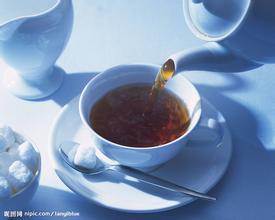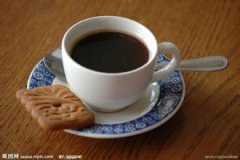The planting situation of boutique coffee beans in Kahayang Gan Manor with obvious sweet fruit, geographical location, climate and altitude.

Coffee Tcoffee: Launched a new local chain in Surabaya at the end of 2006, Coffee Tcoffee expanded to more than 100 branches in 4 years due to its love of espresso.
Having the country's coffee exports at world-class levels as capital makes Indonesians more interested in entering the coffee industry, whether it's roasting coffee, opening a coffee shop, or opening a shop, making domestic coffee consumption grow not just in terms of product volume. In order to encourage better development of quality coffee, the coffee business still needs more understanding and acceptance from consumers to develop coffee growing knowledge. The Chairman of Indonesian Specialty Coffee Association (SCAI), one of the Indonesian quality coffee promotion and development organizations, outlined the overview of the export coffee business.
"Indonesia's total exports grew by an average of 50-20% per year from 2000 to 2009 until it became the world's third largest coffee producer, with robasta coffee accounting for about 70% of total exports, because the Dutch growers, who were the first to grow coffee, did not fully understand Arabica coffee, resulting in low coffee yields and many premature deaths. Farmers returned to growing robasta coffee that was suitable for climate and disease resistance. Later, farmers learned the knowledge and set up organizations to promote Arabica coffee cultivation, which made farmers more confident in growing quality coffee, which was also the demand of market growth. In 2010, the main obstacle to coffee exports was that Indonesia faced longer and heavier rainy seasons than normal, resulting in lower yields. But there is also demand for coffee from all over the world. This means that Indonesian coffee is being demanded by more people, and is becoming more and more high-quality and international. Coffee shops vs. popular Italian coffee It can be said that Indonesia's coffee market, like many ASEAN countries, will develop from the entry of American giants into the domestic market and independent coffee shops. This important phenomenon has changed the perception of coffee as related to life and encouraged local businesses to open their own cafes. The coffee shop owner expressed his opinion on the popularity of Italian coffee: "At present Indonesian coffee is in development, especially in big cities, the market is growing, and consumers are beginning to know more about coffee. Independent shops and coffee chains have been set up a lot and have grown over the past 4-5 years, and I believe the coffee business will continue to grow over the next 5 years. And these shops increased coffee production and coffee consumption in Indonesia, and led to the creation of more local cafes.
Another important feature of Indonesian local cafes that cannot be ignored is the proud recommendation of coffee shop owners for local coffee, even big brands like Starbucks Indonesia still provide quality coffee from Sumatra locally to meet customer needs. This is another factor that Indonesians take into account when considering the quality of local coffee. The cafe owner commented on this issue: "In 2000 when the new store opened, Indonesians did not know espresso. Since they tasted espresso from Italy from chain stores, when independent coffee shops or local chain stores opened continuously, people saw that Italian coffee was not the only good taste. Coffee shops carefully recommended local coffee to let coffee consumers know that local coffee also had the same good taste as Italian coffee."
As Indonesian consumers become more aware of quality coffee, the number of specialty coffee shops has increased, according to coffee shop owners: "In big cities like Jakarta, Surabaya, Bandung, Bali, specialty coffee shops are growing rapidly, which also shows that consumers have more knowledge about coffee, coffee shop owners must choose quality coffee ingredients, the best marketing plan is to hold the hearts of customers with quality products."
A leap forward for local coffee chains. In addition to the growing number of independent coffee shops, Italian coffee has become increasingly popular, even competing with American brands Starbucks and Coffee Bean (currently 31), which has led to more locally branded coffee in recent years.
Here are some of Indonesia's most famous cafes:
According to the International Coffee Organization (ICO), excluding domestic transactions in coffee-producing countries, about 65% of coffee circulating in the world market is Arabica and 35% is Robusta. Arabica is characterized by thin and flat particles. Robusta coffee beans are round. It is easy to distinguish West Africa as the origin of Liberian coffee from its shape. It has strong adaptability to various environments such as high temperature or low temperature, humidity or dryness. It is not resistant to leaf rust and its flavor is worse than Arabica. Therefore, it is only traded domestically in some West African countries (Libya, Cote d'Ivoire, etc.) or planted for research.
Arabica coffee beans grow at higher elevations in the tropics, where it is cooler and where it is not suitable to grow. Robusta has a distinctive aroma (an off-flavor called "rob flavor," which some people think is a musty odor) and bitterness, which makes up only 2 -3% of the blend coffee, and the entire cup of coffee becomes Robusta flavor.
People like to compare Robusta to Arabica coffee, but Robusta is actually a mutant of Congo (Coffea canephora), so it's Congo that should be compared to Arabica. To this day, however, the name Robusta has become common practice, and about 65 percent of coffee circulating on world markets as a species with Congo is Arabica
The flavor is so strong that you might want to consider tasting it directly. It is commonly used in instant coffee (which extracts about twice as much coffee as Arabica), canned coffee, liquid coffee and other industrially produced coffee. The caffeine content is about 3.2%, much higher than the 1.5% of Arabica, but the classification is more complicated when you add Arabica/Robusta hybrids-such as Variedad Colombia, which is the dominant Colombian coffee variety, has a quarter of Robusta descent, and is therefore resistant to leaf rust and high in yield-and its mutant subspecies. Some Arabica coffee beans are quite close to the native species, and some Arabica beans are quite similar to the robusta species. Even if coffee is given the same name (from where it comes from), the flavor varies depending on the cultivar. Leaf rust tolerance varieties found in congo, africa, teach arabica species to be more resistant.
PT Javarabica: general manager of the bakery company, Indonesia, said of the opening process: "Caswell's Coffee was established in 2001, close to the time Starbucks was established in Indonesia. In addition to six sales points, Caswell's Coffee has a reputation for providing coffee roasters to five-star hotels, restaurants and coffee shops. At the same time, it also held coffee knowledge training for employees and held many barista competitions."
Excelso Coffee: A coffee shop chain that integrates planting, production, export and sales equipment. Now it has 19 branches and has become a very popular local coffee shop chain among Indonesians.
Bengawan Solo Coffee: With 37 branches, starting with Ipeng Wi-djojo's obsession with coffee flavor, focusing on selecting high-quality local ingredients and making its own roast coffee, Bengawan Solo Coffee has become a well-known coffee shop and is as popular as foreign coffee chains.
Important Notice :
前街咖啡 FrontStreet Coffee has moved to new addredd:
FrontStreet Coffee Address: 315,Donghua East Road,GuangZhou
Tel:020 38364473
- Prev

A brief introduction to the Market Price of Fine Coffee Bean varieties in Kahayang Gan Manor with strong Flavor
Indonesia's total exports grew at an average annual rate of 50-20% from 2000 to 2009, until it became the third largest coffee manufacturer in the world. Robasta coffee accounted for about 70% of the total export volume. Because the Dutch growers who first grew coffee did not have a full understanding of Arabica coffee, coffee production was low and died a lot, and farmers came back to plant suitable climate.
- Next

Kahayang Gan Manor tends to have a unique Flavor. Simple treatment method for Grinding degree of Fine Coffee beans
ExcelsoCoffee: a chain of coffee shops that integrates planting, production, export and sales equipment, has now opened 19 branches and has become a very popular local coffee chain among Indonesians. BengawanSoloCoffee: there are 37 branches, starting with IpengWi-djojo 's obsession with coffee taste, focusing on choosing high-quality local ingredients and roasting their own coffee.
Related
- Does Rose Summer choose Blue, Green or Red? Detailed explanation of Rose Summer Coffee plots and Classification in Panamanian Jade Manor
- What is the difference between the origin, producing area, processing plant, cooperative and manor of coffee beans?
- How fine does the espresso powder fit? how to grind the espresso?
- Sca coffee roasting degree color card coffee roasting degree 8 roasting color values what do you mean?
- The practice of lattes: how to make lattes at home
- Introduction to Indonesian Fine Coffee beans-- Java Coffee producing area of Indonesian Arabica Coffee
- How much will the flavor of light and medium roasted rose summer be expressed? What baking level is rose summer suitable for?
- Introduction to the characteristics of washing, sun-drying or wet-planing coffee commonly used in Mantenin, Indonesia
- Price characteristics of Arabica Coffee Bean Starbucks introduction to Manning Coffee Bean Taste producing area Variety Manor
- What is the authentic Yega flavor? What are the flavor characteristics of the really excellent Yejasuffi coffee beans?

